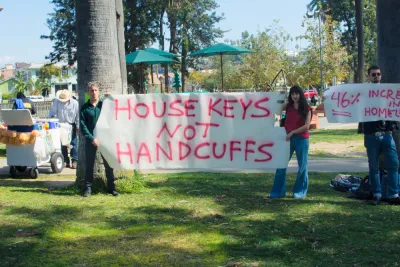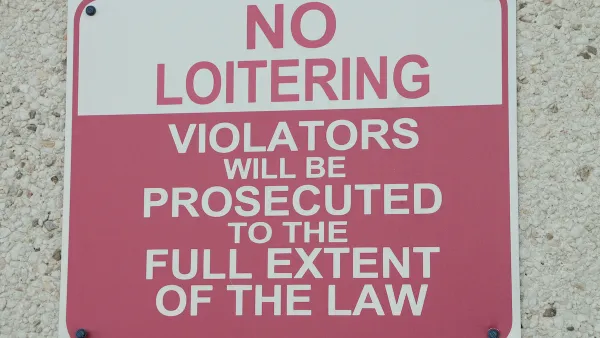‘Housing First’ and other evidence-driven homelessness response programs are showing success in some cities and regions while the number of unhoused people rises across the nation.

A Brookings report by Hanna Love and Tracy Hadden Loh assesses the state of homelessness in the United States and how some cities and regions are making progress on housing their residents even as housing costs grow and the supply of affordable housing remains insufficient to meet demand.
“In nine out of the 44 major cities that completed full PIT counts in 2023, homelessness rates either remained stable or declined between 2022 and 2023, with rates in Austin, Texas, Raleigh, N.C., Indianapolis, and Colorado Springs, Colo. declining over 10 percentage points.” Major cities like New York, Boston, and Chicago saw sharp increases in homelessness rates between 2022 and 2023, but those cities saw an overall reduction in homelessness over the last decade.
Looking at the larger picture of short- and long-term total and unsheltered homelessness trends, it’s clear that there are pockets of both progress and setbacks in U.S. cities—reinforcing the need for upstream solutions that can meet cities and regions where they are.
The report recommends five evidence-based strategies that can help ease the crisis. These include ensuring that housing policy tracks with homelessness policy, using both short- and long-term tools like emergency rental assistance, ‘housing first’ models, and zoning reform that spurs more housing production. Other suggestions include strengthening housing and employment supports for vulnerable populations, using alternative crisis response models to reduce the risk of negative interactions with law enforcement, and taking a “regional, data-driven approach” to homelessness to respond to broader structural challenges.
FULL STORY: Despite a national spike in homelessness, some US regions are finding solutions

National Parks Layoffs Will Cause Communities to Lose Billions
Thousands of essential park workers were laid off this week, just before the busy spring break season.

Retro-silient?: America’s First “Eco-burb,” The Woodlands Turns 50
A master-planned community north of Houston offers lessons on green infrastructure and resilient design, but falls short of its founder’s lofty affordability and walkability goals.

Delivering for America Plan Will Downgrade Mail Service in at Least 49.5 Percent of Zip Codes
Republican and Democrat lawmakers criticize the plan for its disproportionate negative impact on rural communities.

Test News Post 1
This is a summary

Test News Headline 46
Test for the image on the front page.

Balancing Bombs and Butterflies: How the National Guard Protects a Rare Species
The National Guard at Fort Indiantown Gap uses GIS technology and land management strategies to balance military training with conservation efforts, ensuring the survival of the rare eastern regal fritillary butterfly.
Urban Design for Planners 1: Software Tools
This six-course series explores essential urban design concepts using open source software and equips planners with the tools they need to participate fully in the urban design process.
Planning for Universal Design
Learn the tools for implementing Universal Design in planning regulations.
EMC Planning Group, Inc.
Planetizen
Planetizen
Mpact (formerly Rail~Volution)
Great Falls Development Authority, Inc.
HUDs Office of Policy Development and Research
NYU Wagner Graduate School of Public Service





























